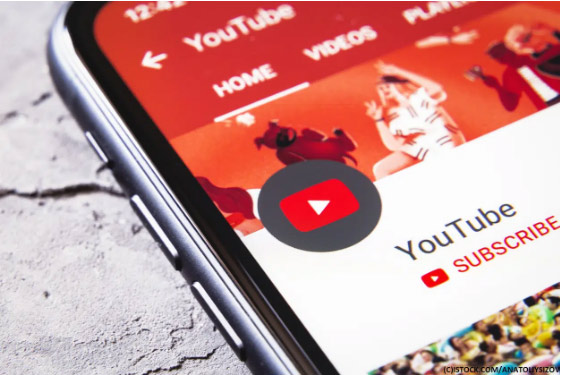Google is the world’s largest search engine, followed by YouTube, which coincidentally, Google owns – of course, they do! It is actually the largest search engine for videos.
So we constantly speak about SEO for your text based pages on your website, but what about videos? Well, SEO is still just as important for your YouTube videos.
If you are in the starting phase and just wandering into the world of video content, then now is a great time to let you know that YouTube videos appear in Google search more than any other video content, perhaps because they own it? Or perhaps it’s because they have over 2 billion users and outrank everyone.
Sometimes, the video just trumps written content. If you want to start ranking for ‘instructions and tutorials’ and ‘sports and training’ or any phrase for that matter, then you need video content. Follow the tips on how to optimize your videos for search, because 70% of what people watch on YouTube is determined by recommendation algorithms.
Ranking Factors
At the end of the day, YouTube is a search engine and just as with Google, different factors will help you rank in the SERP’s.
View and Advertising
Only views that last more than 30 seconds are actually considered a view. Multiple views by the same user are counted as new views, but not on the same day, sometimes they are treated as spam.
Spambots are constantly on patrol, preventing spambots and people from trying to cheat and hike up their view count. Keeping a close eye on the view count is very important as YouTube trades views, it buys them and then sells them to advertisers.
Subscribers & Audience Retention
YouTube’s algorithms crawl accounts and count how many active accounts that belong to real people are following you. Closed accounts and spam (fake accounts that are generally paid for) are not counted. The retention of your audience, more important than clicks and views, is the total length of time that users are watching your video, and gauges where others stop watching. Catch attention as quickly as possible, add humour, anything you can to keep their attention is to your benefit.
Authority & Engagement
Content creations and the ability to make money from YouTube are very high. Gaining authority is a labour of love, getting those views turned into comments, replies to comments and new subscribers after each video are continued labour. The best way that you can rank on YouTube is to make it match a relevant query – research what your audience is searching for.
The more your audience engages with your videos, your organic outreach increases. If someone watches one of your videos and goes right to the next, the algorithm will pick up on this and recommend your video to more people. Reply to comments and ask questions.
Keyword Research
Video keyword research, find out what your audience is interested in and how they actually word it/type it in. For this process, you can use Youtube’s auto search suggestion. See what comes up in the drop down list. Or use your tools, like the rank tracker keyword tool.
Using tools is more efficient and lets you compare search volumes, competition and difficulty, rather than just the phrase. If you are finding that YouTube is limited, you can use Google, they are not 100% interchangeable but overlap in popular queries.
If Google doesn’t have suggestions for videos for a certain keyword, sometimes, going back to the articles is the best option, rather than being ignored.
Where To Put Keywords
Title (Keep it to 60 character limit) – This reflects your topic. So include the keywords that you want to rank for here. Suggestions are that videos with exact matches rank better. There is also a title translation option to reach users in their native languages.
Description – This helps viewers to find your videos through search. Make sure not to sound robotic, use buttons, and put your keywords closer to the beginning of the description. The content length here, does not rank you.Making sure to check your keywords in Google Trends is a great way to compare your keyword ideas and gauge which are most popular. Enter your search, make sure to filter by YouTube and Related queries.
Metadata
This is the first thing that a user will see when they get to your video. This used to be so important so that the crawlers knew what the videos were about, but with AI developments, they already know what’s in your videos, for the most part, this is to ensure that your content is not misinterpreted and you rank correctly. Make sure that you optimise your meta-data straight away when posting.
Thumbnails
This is what a user first sees before they decide to watch your video. Make it an attractive image, with people, so it’s ‘alive’, use text, but don’t be overwhelming, aim for 30% of an image. The more professional it looks, the more credible it is considered.
Optimize Your Tags
Tags work in a similar way to keywords, so you try to borrow the best tags from other successful videos. These tags are not readily visible, software is used to view a competitor’s chosen tags.
Provide Closed Captions
Artificial Intelligence can pick up on sound, but providing closed captions, eliminates errors through pronunciation etc. Use keywords throughout your closed captions to help your video rank. If you have a video that consists of a lot of parts, make sure to identify each part so that you rank for that term.
Share Your Videos
Youtube SEO is important, but it is not the only option in driving traffic to your video. Facebook and Instagram are heavily used to watch videos as well. Crossposting on other platforms, these views don’t count, but they might click through and watch other videos, or simply encourage the users to watch your video on YouTube.
Embed Links In Blog Posts, Emails, And Cards
Links are not a ranking factor for YouTube the way they are for Google. Though, link-building tactics around your videos can boost your YouTube SEO overall. Featuring your videos on your blog posts is one way, the chance of appearing in the Google organic results are increased significantly.
Building Authority
Users will often search and then when hit with a number of results, they begin the process of elimination, which is more often than not based on what they recognise, remain very consistent with your branding of videos, and build the users trust.
Monitor Your Results
What to monitor to improve your YouTube SEO;
- Demographics
- Traffic sources
- Engagement statistics
- Search statistics
- Click through rate (long term metric)
Analyse click through rate coupled with something else, like average view duration, this will give you a better insight into how people watch your videos.
Look at your top videos, look at your audience, your viewer’s interests and watching habits. You will get plenty of insights into how to rank YouTube videos for your target audience. Link your YouTube analytics to Google Analytics, this will allow you to track transactions and conversions.
The YouTube SEO process may seem daunting if you have never tackled it, but it really isn’t once you do them a couple of times, as with anything.
Make sure you have a firm grasp on how YouTube and Google algorithms work and make the best attempts to optimise your videos. Track their performance and improve each time.
If you have any queries regarding video optimisation, web design or digital marketing, please get in touch with us.
About the author:
The best of digital talent, all under one roof. We are also experts in getting targeted traffic to your site, so not only does your website look and function great, but with our SEO plans you will have a steady supply of potential customers finding your site via organic search. We pride ourselves on ‘outcaring’ the competition by building meaningful connections with your audience through SEO. This way you’ll get the best ROI.





